Giant squid are some of the largest cephalopods in the world, second only to the colossal squid. These mysterious creatures owe their size to deep-sea living. Scientists aren’t quite sure how many species of these squid live in the deep sea, mainly because it is so difficult to study animals in the depths! Read on to learn about the giant squid.
Description of the Giant Squid
This species look virtually the same as any other squid except, well … giant. They have a torpedo-shaped body, called a “mantle,” that is capped with two fins at the top. At the bottom of the mantle they have eight arms, and two tentacles that are much longer than the arms.
Most of the squid’s length consists of arms and tentacles, making them surprisingly light for their size. The arms and tentacles are lined on the inner surface with round suction cups containing serrated tooth-like chitin.
Interesting Facts About the Giant Squid
The idea of a massive squid at the bottom of the sea is interesting in itself. If their mere existence isn’t shocking enough, these fun facts may catch you by surprise.
- Deep Sea Death Battle – Giant squid are the primary prey for, and mortal enemy of, the sperm whale. Deep beneath the water’s surface, these colossal creatures battle for their lives. Sperm whales are commonly scarred with round incisions from these enormous squids’ suckers.
- Big Pair of Peepers – A giant squid’s eyes are massive! They can be as large as dinner plates or Frisbees at 10.5 inches across. Because these squid live in the high-pressure environment of the deep sea, their eyes are filled with water instead of the thicker substance ours are filled with. This means that when they leave the depths their eyes deflate like water balloons.
- Giants of the Deep – Giant squids are truly impressive creatures. Scientists have confirmed specimens as large as 43 ft. long! What’s even more impressive is the infancy of our research on these animals. Though scientifically unconfirmed, there have been reports of specimens 60 or 70 feet long.
- Recent Research – Our knowledge of this elusive squid’s behavior, lifestyle, and reproduction is still in its infancy. Scientists didn’t even photograph a living specimen until 2004. The first time a giant squid was ever recorded on video was in 2006, and scientists are still continuing their research.
Habitat of the Giant Squid
From what scientists have surmised, giant squids live in the deep sea, close to slopes in the sea floor. They are most frequently found near continental shelf slopes, and islands slopes. Because so little is known about these squids, they may very well frequent other deep-sea habitats as well.
Distribution of the Giant Squid
These squids can be found in deep oceans worldwide. Their distribution is incredibly widespread, with specimens found or captured from the north Atlantic Ocean near Norway, and Newfoundland to the south Atlantic Ocean near South Africa. In the Pacific Ocean they can be commonly found from Japan to Australia. It is rare to find them near tropical or polar regions.
Diet of the Giant Squid
These squid feed on deep-sea fish and other species of squid. It is believed they may occasionally cannibalize each other, as fragments of other giant squid beaks have been found in their stomachs.
Prey is captured by quickly grabbing it with the two long tentacles. It is believed that these squid are solitary, because they are only captured in nets individually.
Giant Squid v. Colossal Squid
Giant squid are sometimes confused with colossal squid, but in reality they are not closely related. Colossal squid are believed to be larger than giants, at least in weight. It is believed that colossal squid can weigh up to 1,650 lbs., and giants are estimated to weigh only 600 lbs. or so at most.
Colossal squid have thicker mantles, and shorter tentacles than the giants do. Unlike giant squid, colossal squid are found in polar regions in the Southern Hemisphere.
Giant Squid and Human Interaction
Humans very rarely interact with giant squid, namely because we seldom visit the deep sea. They are, however, not uncommonly pulled from the depths by fishermen’s nets. Giant squid and colossal squid are believed to be the basis of many sea monster mythological stories.
Many legends tell of the kraken, which is a vicious squid, or octopus-like creature that attacks ships. Despite this folklore, there are very few accounts of these marine giants attacking ships, likely because they reside in the deep sea and rarely come to shallow waters.
Domestication
Giant squid have not been domesticated in any way.
Does the Giant Squid Make a Good Pet
Giant squid would not make good pets, simply because it would be nearly impossible to keep them alive. Even if they could be kept in aquariums, their size is also a huge hurdle when keeping such a giant creature as a pet.
Giant Squid Care
To date, no giant squids have been successfully kept in aquariums. Most of the time, when individuals are at the surface, they are either dead or dying. Squid in general are difficult to keep in aquariums because they tend to jet water through their mantles and run into the sides of the tanks, becoming injured.
Behavior of the Giant Squid
Observations of these squids in their natural habitat are minimal. Most of the information we know about them is extrapolated from other squid species, or from deceased specimens. It is believed that giant squid are solitary creatures, but only because we have never captured more than one at a time in nets. There is still much to learn about giant squid behavior.
Reproduction of the Giant Squid
As is the case with behavior, very little is known about giant squid reproduction. It is assumed their reproduction is similar to that of other squid species. Females produce large numbers of eggs, and a jelly-like substance holds these eggs together when they are laid.
How reproduction actually occurs is a more heated debate because giant squid lack some of the reproductive parts that other squid do. A specimen with a small tendril attached to each arm suggests that the male injects sperm into the arms of the female, and she stores this sperm until her eggs are ready to fertilize.

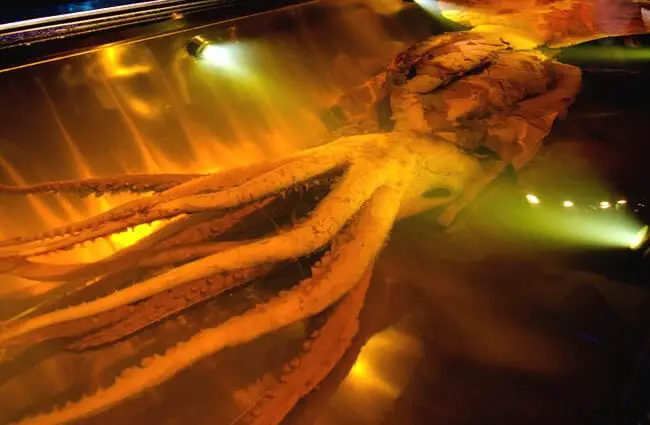
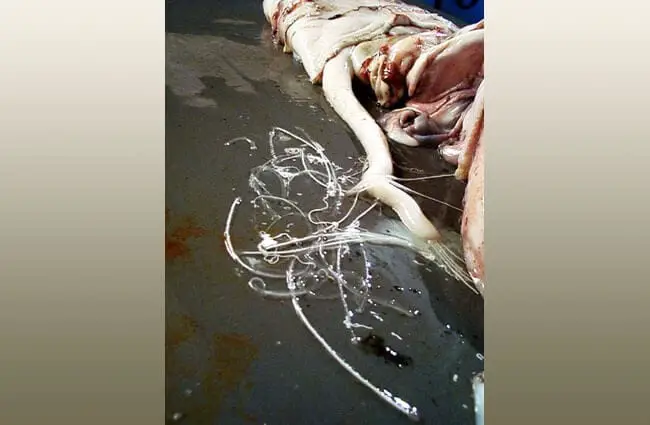
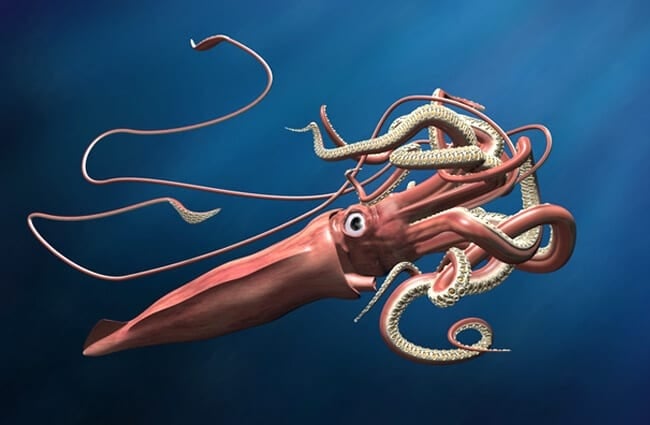

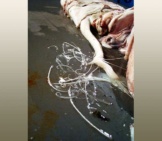
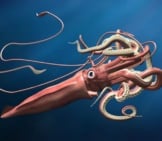

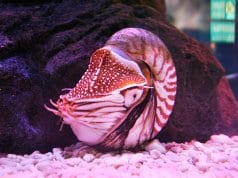
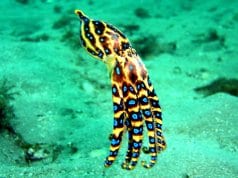










![Red Angus Closeup of a beautiful Red Angus cowPhoto by: U.S. Department of Agriculture [pubic domain]https://creativecommons.org/licenses/by/2.0/](https://animals.net/wp-content/uploads/2020/03/Red-Angus-4-100x75.jpg)

